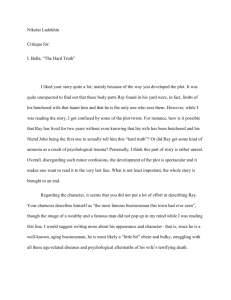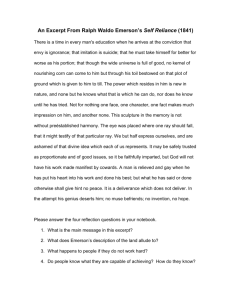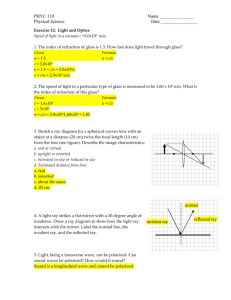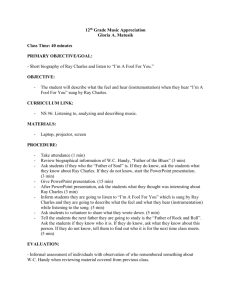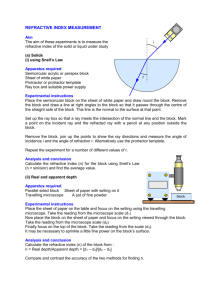In Memoriam Ray E. Ashton, Jr.
advertisement
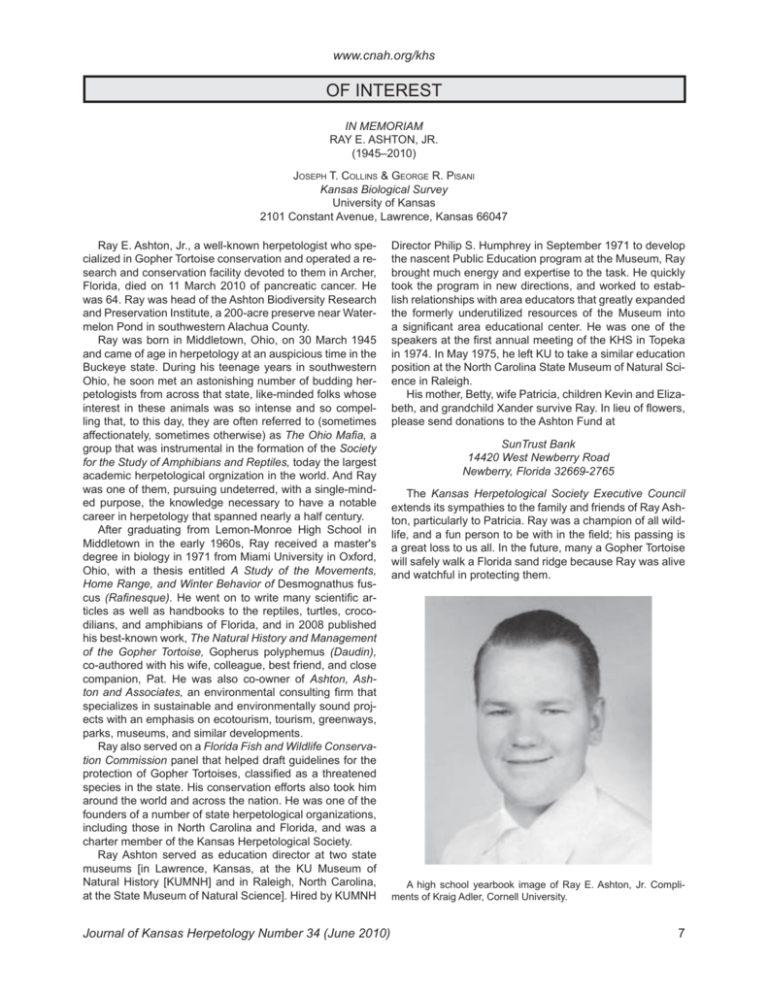
www.cnah.org/khs OF INTEREST IN MEMORIAM RAY E. ASHTON, JR. (1945–2010) JOSEPH T. COLLINS & GEORGE R. PISANI Kansas Biological Survey University of Kansas 2101 Constant Avenue, Lawrence, Kansas 66047 Ray E. Ashton, Jr., a well-known herpetologist who specialized in Gopher Tortoise conservation and operated a research and conservation facility devoted to them in Archer, Florida, died on 11 March 2010 of pancreatic cancer. He was 64. Ray was head of the Ashton Biodiversity Research and Preservation Institute, a 200-acre preserve near Watermelon Pond in southwestern Alachua County. Ray was born in Middletown, Ohio, on 30 March 1945 and came of age in herpetology at an auspicious time in the Buckeye state. During his teenage years in southwestern Ohio, he soon met an astonishing number of budding herpetologists from across that state, like-minded folks whose interest in these animals was so intense and so compelling that, to this day, they are often referred to (sometimes affectionately, sometimes otherwise) as The Ohio Mafia, a group that was instrumental in the formation of the Society for the Study of Amphibians and Reptiles, today the largest academic herpetological orgnization in the world. And Ray was one of them, pursuing undeterred, with a single-minded purpose, the knowledge necessary to have a notable career in herpetology that spanned nearly a half century. After graduating from Lemon-Monroe High School in Middletown in the early 1960s, Ray received a master's degree in biology in 1971 from Miami University in Oxford, Ohio, with a thesis entitled A Study of the Movements, Home Range, and Winter Behavior of Desmognathus fuscus (Rafinesque). He went on to write many scientific articles as well as handbooks to the reptiles, turtles, crocodilians, and amphibians of Florida, and in 2008 published his best-known work, The Natural History and Management of the Gopher Tortoise, Gopherus polyphemus (Daudin), co-authored with his wife, colleague, best friend, and close companion, Pat. He was also co-owner of Ashton, Ashton and Associates, an environmental consulting firm that specializes in sustainable and environmentally sound projects with an emphasis on ecotourism, tourism, greenways, parks, museums, and similar developments. Ray also served on a Florida Fish and Wildlife Conservation Commission panel that helped draft guidelines for the protection of Gopher Tortoises, classified as a threatened species in the state. His conservation efforts also took him around the world and across the nation. He was one of the founders of a number of state herpetological organizations, including those in North Carolina and Florida, and was a charter member of the Kansas Herpetological Society. Ray Ashton served as education director at two state museums [in Lawrence, Kansas, at the KU Museum of Natural History [KUMNH] and in Raleigh, North Carolina, at the State Museum of Natural Science]. Hired by KUMNH Journal of Kansas Herpetology Number 34 (June 2010) Director Philip S. Humphrey in September 1971 to develop the nascent Public Education program at the Museum, Ray brought much energy and expertise to the task. He quickly took the program in new directions, and worked to establish relationships with area educators that greatly expanded the formerly underutilized resources of the Museum into a significant area educational center. He was one of the speakers at the first annual meeting of the KHS in Topeka in 1974. In May 1975, he left KU to take a similar education position at the North Carolina State Museum of Natural Science in Raleigh. His mother, Betty, wife Patricia, children Kevin and Elizabeth, and grandchild Xander survive Ray. In lieu of flowers, please send donations to the Ashton Fund at SunTrust Bank 14420 West Newberry Road Newberry, Florida 32669-2765 The Kansas Herpetological Society Executive Council extends its sympathies to the family and friends of Ray Ashton, particularly to Patricia. Ray was a champion of all wildlife, and a fun person to be with in the field; his passing is a great loss to us all. In the future, many a Gopher Tortoise will safely walk a Florida sand ridge because Ray was alive and watchful in protecting them. A high school yearbook image of Ray E. Ashton, Jr. Compliments of Kraig Adler, Cornell University. 7


